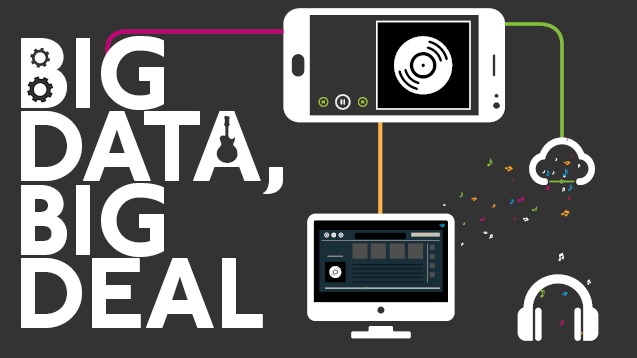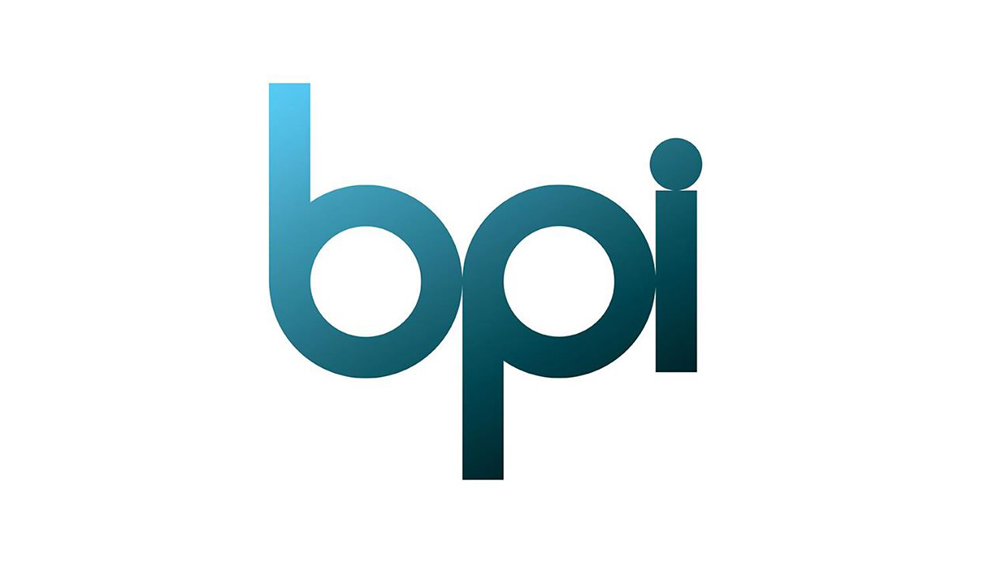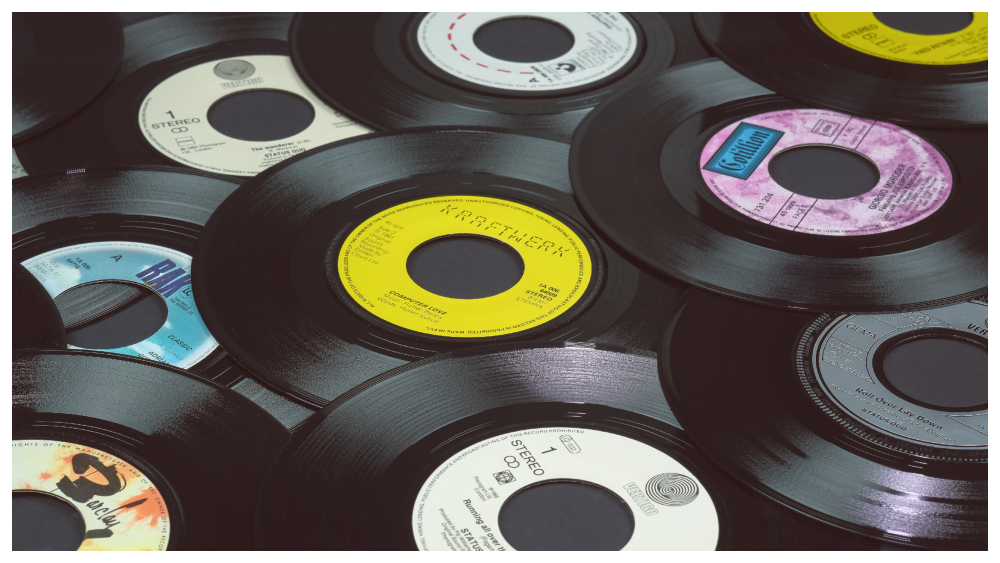Data can help artists book shows, grow their fanbase, make sales and learn more about how to cater to those who love what they do. So where is it found? And how can it be used to boost careers? Rhian Jones reports.
Alongside streaming, data has perhaps become the most frequented word in the music industry’s lexicon in recent years. The online world has brought a wealth of access to stats that were near impossible to collect before the internet age; like how often a music fan played an album, what songs they listened to most, whether they were aged 14 or 41 and male or female. All this information can be used to reach a wider audience, track down super fans, help inform tours, merchandise decisions, future single choices and strengthen arguments when making the case for playlist inclusion.
So where is it found? Spotify is currently leading the charge with its recently launched (and free to use) Fan Insights dashboard, which gives artists and managers access to monthly and daily listeners, fans that listen most, as well as data about how those people are listening, their age bracket and gender. It’s currently only available in beta, but any artist and manager can request early access.
Elsewhere, YouTube, Facebook and Twitter all have their own dashboard offerings, while Next Big Sound and Cyfe offer an overview of stats across multiple platforms - and that all-encompassing view is vital to get a true representation of a worldwide audience.
The killer question
The wealth of stats, numbers and graphs available can be overwhelming, and data is only valuable once dissected. So there are a few precautions to keep in mind when crunching numbers, relativity being the first.
Chris Carey - a data analyst who works with clients including Sony Music via his Media Insight Consulting firm – considered the art of data mining during a talk at Eurosonic Noorderslag in January: ‘If an artist's streams have grown 20 percent over the last 12 months, but the streaming market has grown 40 percent, compared to the market you’ve not grown at all, you’ve shrunk,’ he explained.
Impressions might sound impressive too, but a thousand impressions of one Tweet, advert or Facebook post doesn’t necessarily count for a thousand views by a thousand people. It could, in fact, be a thousand views from the same person.
It’s important to contextualise your data, and the best way to do this is to find your question, Chris believes. ‘The mistakes people often make is that you go to data without a question, expecting it to tell you something. You can sit there for hours digging into data, finding something interesting, following a thread until you end up with an interesting comment that’s nothing to do with why you started. Data might have all the answers, but the skill is to ask the killer question.’
That killer question could be: how much merchandise should I print for males, and how much for females? In which cities should I next tour? What should be my next single release? How can I get stats that help make the case for a playlist spot? Where would outdoor advertising be best placed?
Discovering answers
Sammy Andrews uses data to answer all the questions above and more in her job as a strategic advisor to the music industry - a role she’s recently expanded to include Director at data solution firm Entertainment Intelligence. In her past life, Sammy was Head of Digital at Cooking Vinyl, where she saw through The Prodigy’s The Day Is My Enemy album campaign from start to finish. It was the second biggest selling independent album of 2015, and, while the quality of the music and legendary status of the act certainly helped matters, marketing decisions were based on data inspired out-of-the-box ideas.
Sammy says: ‘We could see a resurgence in young males listening to The Prodigy. Some of them were into gaming, so that led me to set up a partnership with Twitch, one of biggest online live gaming platforms which had previously blocked music due to rows over licensing. We experimented and licensed a track, which they covered on their homepage and allowed users to stream within the game they were playing.
‘We saw instant uptake of that track, which wasn’t a single, and also instant uptake of back catalogue, as Twitch users who didn’t know the band previously headed to different services to check out who they were. That campaign was a result of looking at who the audience were, imagining the audience that we wanted to approach, and exploring new partnerships in the spaces they frequented to see if it worked - and it did.’
Historical geographical data on where physical sales of The Prodigy’s music had been strongest in the past also helped Sammy place adverts in the right shopping centres and billboards, targeting the areas they knew were likely to reach the people that would be inclined to buy the album. ‘It made it much easier to reconnect in the first instance so we didn’t have to guess where they might be now, we could see where they were and make that instant re-engagement,’ she explains.
Alongside streaming, data has perhaps become the most frequented word in the music industry’s lexicon in recent years. The online world has brought a wealth of access to stats that were near impossible to collect before the internet age; like how often a music fan played an album, what songs they listened to most, whether they were aged 14 or 41 and male or female. All this information can be used to reach a wider audience, track down super fans, help inform tours, merchandise decisions, future single choices and strengthen arguments when making the case for playlist inclusion.
So where is it found? Spotify is currently leading the charge with its recently launched (and free to use) Fan Insights dashboard, which gives artists and managers access to monthly and daily listeners, fans that listen most, as well as data about how those people are listening, their age bracket and gender. It’s currently only available in beta, but any artist and manager can request early access.
Elsewhere, YouTube, Facebook and Twitter all have their own dashboard offerings, while Next Big Sound and Cyfe offer an overview of stats across multiple platforms - and that all-encompassing view is vital to get a true representation of a worldwide audience.
The killer question
The wealth of stats, numbers and graphs available can be overwhelming, and data is only valuable once dissected. So there are a few precautions to keep in mind when crunching numbers, relativity being the first.
Chris Carey - a data analyst who works with clients including Sony Music via his Media Insight Consulting firm – considered the art of data mining during a talk at Eurosonic Noorderslag in January: ‘If an artist's streams have grown 20 percent over the last 12 months, but the streaming market has grown 40 percent, compared to the market you’ve not grown at all, you’ve shrunk,’ he explained.
Impressions might sound impressive too, but a thousand impressions of one Tweet, advert or Facebook post doesn’t necessarily count for a thousand views by a thousand people. It could, in fact, be a thousand views from the same person.
It’s important to contextualise your data, and the best way to do this is to find your question, Chris believes. ‘The mistakes people often make is that you go to data without a question, expecting it to tell you something. You can sit there for hours digging into data, finding something interesting, following a thread until you end up with an interesting comment that’s nothing to do with why you started. Data might have all the answers, but the skill is to ask the killer question.’
That killer question could be: how much merchandise should I print for males, and how much for females? In which cities should I next tour? What should be my next single release? How can I get stats that help make the case for a playlist spot? Where would outdoor advertising be best placed?
Discovering answers
Sammy Andrews uses data to answer all the questions above and more in her job as a strategic advisor to the music industry - a role she’s recently expanded to include Director at data solution firm Entertainment Intelligence. In her past life, Sammy was Head of Digital at Cooking Vinyl, where she saw through The Prodigy’s The Day Is My Enemy album campaign from start to finish. It was the second biggest selling independent album of 2015, and, while the quality of the music and legendary status of the act certainly helped matters, marketing decisions were based on data inspired out-of-the-box ideas.
Sammy says: ‘We could see a resurgence in young males listening to The Prodigy. Some of them were into gaming, so that led me to set up a partnership with Twitch, one of biggest online live gaming platforms which had previously blocked music due to rows over licensing. We experimented and licensed a track, which they covered on their homepage and allowed users to stream within the game they were playing.
‘We saw instant uptake of that track, which wasn’t a single, and also instant uptake of back catalogue, as Twitch users who didn’t know the band previously headed to different services to check out who they were. That campaign was a result of looking at who the audience were, imagining the audience that we wanted to approach, and exploring new partnerships in the spaces they frequented to see if it worked - and it did.’
Historical geographical data on where physical sales of The Prodigy’s music had been strongest in the past also helped Sammy place adverts in the right shopping centres and billboards, targeting the areas they knew were likely to reach the people that would be inclined to buy the album. ‘It made it much easier to reconnect in the first instance so we didn’t have to guess where they might be now, we could see where they were and make that instant re-engagement,’ she explains.
Looking at streaming numbers and ad-clickthrough rates can also help reach a wider audience, and is a strategy Lucy Blair, Director at digital marketing consultancy Motive Unknown, has used for an artist recently (who has asked to remain unnamed). The person in question is anti-streaming and focused efforts on pushing physical sales of their latest album. However, Lucy saw a big demand for their music on streaming services and iTunes, enabling her to make the case for a more all-encompassing marketing campaign going forward.
‘This person has got big numbers on Spotify, people are coming to their artist page and really want to stream the music. The management team weren’t even aware of this, so the Spotify dashboard has been really useful for me to go, “streaming is really important and we can’t ignore this audience.” We’re now thinking about catering for those people and how we can do it in a natural way through something like a radio style playlist in the future.’
Early adopters
Data mining is especially important for young acts, says Sammy, who can see spikes in sales, streams and Shazams early on, react quickly, and secure ticket sales and loyal fans.
‘If they can see a track suddenly taking off in a small town in France, for example, then they should probably get over there, tour and capitalise on what they can already see happening,’ she says. ‘Also, if a new band have areas where they are not seeing traction and they have a release coming up, it’s equally important to look at why they aren't resonating and get in there.’
The same goes for playlist tracking - a service Sammy is offering at Entertainment Intelligence - where bands and managers can avoid the hefty fees associated with playlist pluggers. She says: ‘A lot of managers now pay a fortune to pluggers to push tracks onto digital service providers’ playlists in the same way they did with traditional radio. You might pay a plugger to get you onto 50 Spotify playlists, but you don’t necessarily know how many plays it’s generated and it’s often not the way people would think; the playlists with the biggest follower counts don’t always translate to the biggest play count.
‘Sometimes the smaller, well-curated lists with a better editorial tone that have a thousand followers generate you six thousand plays, as opposed to one with 50,000 followers generating a thousand plays. When you’re a new band, that information is really important; if you can spot emerging playlists that might not be owned by Apple or Spotify, but might be owned by a guy sat in his bedroom in Liverpool - you can nurture that relationship and feed them future tracks.’
What’s next?
There are a number of companies ramping up investment in data solutions this year, including PRS for Music. The collecting society is working on creating a ‘simple, easy and transparent online digital experience that will provide members with the tools to make informed decisions in order to maximise royalties,’ according to Graham Davies, Director of Digital and Strategy.
Elsewhere, Spotify is working on rolling out the Fan Insights dashboard, expanding its data-based recommendations to video as well as audio, and there’s growing support for blockchain technology, which would allow artists and songwriters to track the data trail of a song in real time.
However, for all the insight data can provide, it's worth remembering what it can't do: replicate the genuine connection between artist and fan. Concludes Lucy: ‘Successful marketing is all about a combination of data and engagement. You can use numbers to work out what kind of post, advert or content is engaging with fans the most, but that must be combined with the artist having a conversation with their fans themselves, asking for feedback, what they want, and how they want to support them.
‘Data on its own isn’t going to save the industry, your artist, band, album or whatever it might be. It’s all about trying to make a combination of data, engagement, algorithm and human curation work together as successfully and harmoniously as possible.’
‘This person has got big numbers on Spotify, people are coming to their artist page and really want to stream the music. The management team weren’t even aware of this, so the Spotify dashboard has been really useful for me to go, “streaming is really important and we can’t ignore this audience.” We’re now thinking about catering for those people and how we can do it in a natural way through something like a radio style playlist in the future.’
Early adopters
Data mining is especially important for young acts, says Sammy, who can see spikes in sales, streams and Shazams early on, react quickly, and secure ticket sales and loyal fans.
‘If they can see a track suddenly taking off in a small town in France, for example, then they should probably get over there, tour and capitalise on what they can already see happening,’ she says. ‘Also, if a new band have areas where they are not seeing traction and they have a release coming up, it’s equally important to look at why they aren't resonating and get in there.’
The same goes for playlist tracking - a service Sammy is offering at Entertainment Intelligence - where bands and managers can avoid the hefty fees associated with playlist pluggers. She says: ‘A lot of managers now pay a fortune to pluggers to push tracks onto digital service providers’ playlists in the same way they did with traditional radio. You might pay a plugger to get you onto 50 Spotify playlists, but you don’t necessarily know how many plays it’s generated and it’s often not the way people would think; the playlists with the biggest follower counts don’t always translate to the biggest play count.
‘Sometimes the smaller, well-curated lists with a better editorial tone that have a thousand followers generate you six thousand plays, as opposed to one with 50,000 followers generating a thousand plays. When you’re a new band, that information is really important; if you can spot emerging playlists that might not be owned by Apple or Spotify, but might be owned by a guy sat in his bedroom in Liverpool - you can nurture that relationship and feed them future tracks.’
What’s next?
There are a number of companies ramping up investment in data solutions this year, including PRS for Music. The collecting society is working on creating a ‘simple, easy and transparent online digital experience that will provide members with the tools to make informed decisions in order to maximise royalties,’ according to Graham Davies, Director of Digital and Strategy.
Elsewhere, Spotify is working on rolling out the Fan Insights dashboard, expanding its data-based recommendations to video as well as audio, and there’s growing support for blockchain technology, which would allow artists and songwriters to track the data trail of a song in real time.
However, for all the insight data can provide, it's worth remembering what it can't do: replicate the genuine connection between artist and fan. Concludes Lucy: ‘Successful marketing is all about a combination of data and engagement. You can use numbers to work out what kind of post, advert or content is engaging with fans the most, but that must be combined with the artist having a conversation with their fans themselves, asking for feedback, what they want, and how they want to support them.
‘Data on its own isn’t going to save the industry, your artist, band, album or whatever it might be. It’s all about trying to make a combination of data, engagement, algorithm and human curation work together as successfully and harmoniously as possible.’

.ashx?h=67&w=80&la=en&hash=340524FD746527338490DF251ABF8B71)



